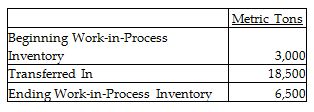What are the important aspects of the Family and Medical Leave Act?
The Family and Medical Leave Act was signed into law by President Clinton in 1993. It allows an eligible employee to take up to twelve weeks' unpaid leave in any twelve months because of:
• the birth, adoption, or foster care of a child;
• the need to care for a child, spouse, or parent with a serious health condition; or
• the employee's own serious health condition that makes the employee unable to perform functions of his or her job.
You might also like to view...
______ is the socially constructed roles and behaviors that the members of a given society believe appropriate for males and females.
Fill in the blank(s) with the appropriate word(s).
Which of the following statements is false regarding forensic accounting?
a. Forensic accounting builds support for legal action against the person committing the fraud by identifying the fraud, calculating the damages caused by the fraud, and building both factual and testimonial evidence of the fraud. b. Forensic accountants rely on sampling of fraud-related documents to accurately measure the cost of the fraud. c. One aspect of forensic accounting focuses on identifying the person who has perpetrated the fraud and having that person confess to the fraud. d. Interviewing is one of the most important forensic accounting skills.
The Zakchari Company has six processing departments for refining sugar—Affination, Carbonation, Decolorization, Boiling, Recovery, and Packaging. Conversion costs are added evenly throughout each process, and materials are added at the beginning of each process. Data from August for the Recovery Department are as follows:

In August, 15,000 metric tons were completed and sent to the Packaging Department. The ending Work-in-Process Inventory was 50% complete with respect to conversion costs. Prepare a production cost report for the Recovery Department to show the equivalent units for direct materials and conversion costs. The weighted-average method is used.
Using the code for FVCFs, where CashFlows = B2:F2, Time = 7, and Rate = 7%, what is the value of FV when t=2?

Public Function FVCFs(CashFlows As Range, Time As Single, Rate As Single) As Single
Dim t As Integer, VarCount As Integer
Dim FV As Single
VarCount = CashFlows.Count
FV = 0
For t = 1 To VarCount
FV = FV + CashFlows(t) * (1 + Rate) ^ (Time - t)
Next t
FVCFs = FV
End Function
a) $150.07
b) $430.58
c) $823.82
d) $1,313.84
e) $1,886.29